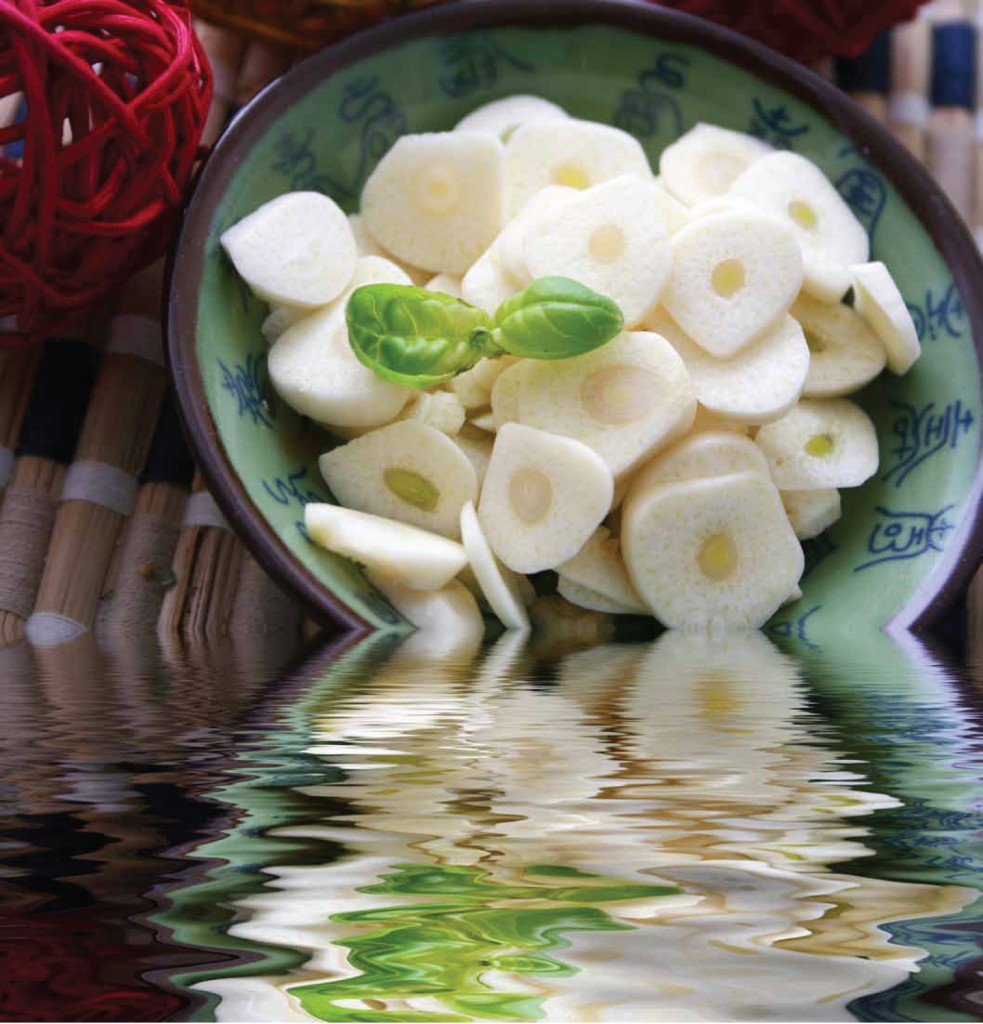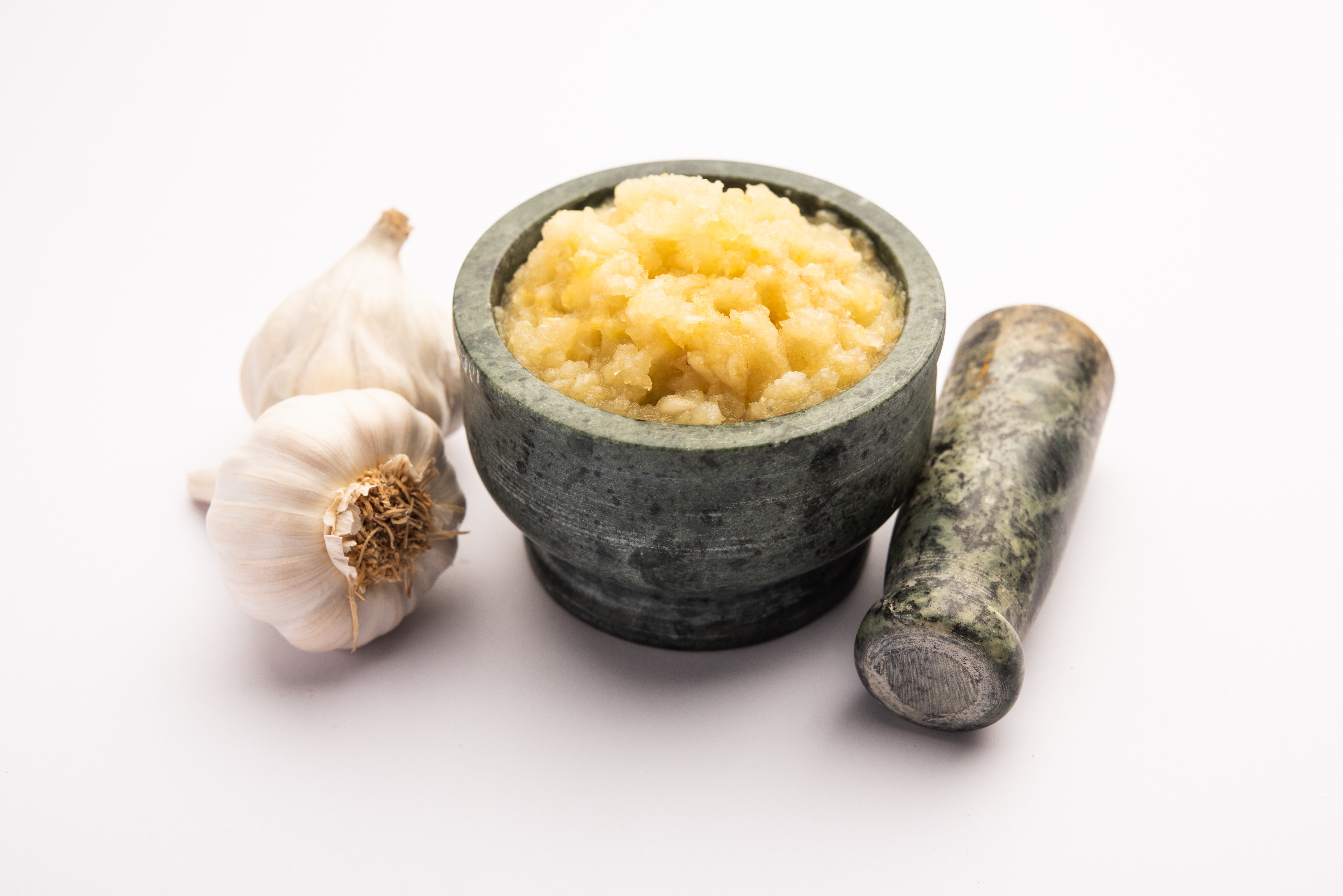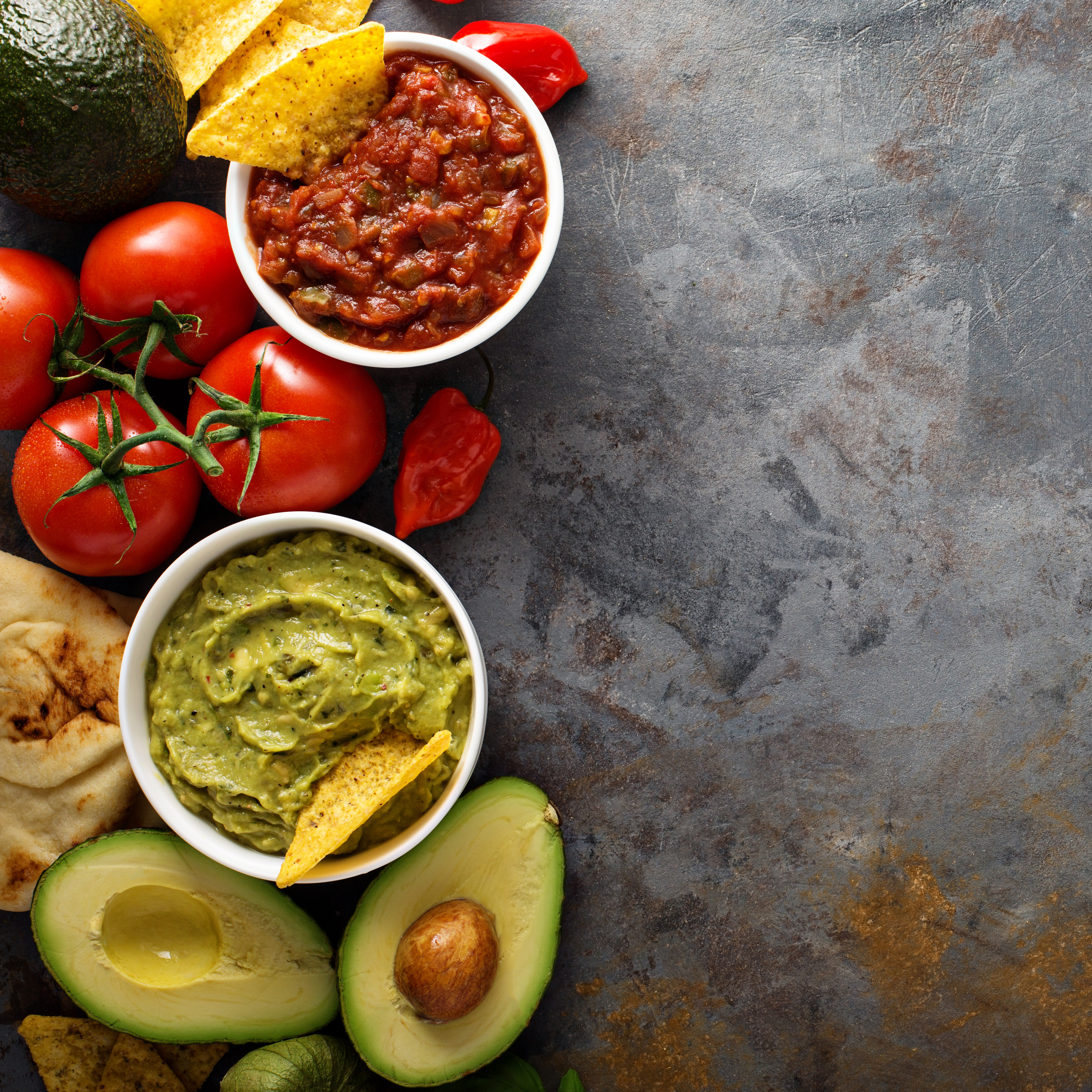
by Sharon Quercioli
Garlic! I do love it. Having garlic in the kitchen has been a longstanding tradition in many Italian households for generations. Being half Italian, I can never recall a time from my childhood when we didn’t have garlic as an ingredient in our meals. Even today, I always have at least two bulbs on hand for cooking. I was taught early on that garlic is good for the body, but I’ve always wondered what about it makes it so special.
Garlic has long been touted as a super-healthy food, and there are many groups, fan clubs, festivals, restaurants (even the whole town of Gilroy, California) devoted to this beloved “stinking rose.” It’s also supposed to ward off vampires! So, I’ve looked into the spicy world of garlic to find out why. What I’ve found is that in addition to being a vital part of good cooking, it’s very good for you nutritionally. Here’s why…
What’s in a clove?
Nutritionally speaking, you’d need to eat several cloves of garlic before you started seeing a lot of vitamins and minerals. Three cloves give you 5% of your vitamin C and 6% of your vitamin B6 for the day, as well as some calcium and manganese. The big benefit, however, comes in the form of sulfur-containing compounds—this translates into antioxidants—which help scrub your system clean of various destructive agents, including those that may cause cancer.
There have been a variety of large-scale studies conducted in the last few decades, examining between 20,000 and 40,000 patients over a span of several years, which have concluded that the regular consumption of garlic—whether in raw/natural form or the much more socially acceptable odorless capsule form—has been shown to reduce stomach and colon cancer, as well as other forms of cancer, by 35% to 40%.

Allicin is the main player among these sulfur-containing compounds; it’s what gives garlic not only its famous odor, but also many of its beneficial, healing properties. Allicin and garlic have been studied extensively and are shown to have definite antifungal, antimicrobial and antibacterial properties.
It’s also had a history of being used as a vermifuge or antiworm medication. According to some studies, regular consumption of garlic (at least a few cloves a day) has been shown to reduce high blood pressure, high cholesterol and heart disease.
Cold killer?
Garlic is one of nature’s most effective healers. From eating it raw to using garlic poultices on everything from boils to poison ivy to acne, hundreds if not thousands of websites, published books and advice columns are devoted to explaining all the ways garlic can be used to heal whatever ails you. However, it’s almost universally agreed that cooked garlic won’t have the same healing properties—it’s got to be raw and reeking to work its magic.
At the first sign of a cold or flu, true believers chop up a few cloves of fresh raw garlic and hastily proceed to consume the believed-to-be healing remedy within a few minutes. Incidentally, these same believers insist that the garlic must be chopped, sliced or crushed to release the healing properties of allicin and other nutrients.
Traditional Chinese medicine recommends it as a cure for everything from dysentery to whooping cough.

Easy ways to eat garlic.
Because raw garlic can be so overpowering in both taste and odor, there are a number of creative ways to consume it without experiencing the burning-tongue torture that can result from eating it straight. Mixing a fat dollop of crushed garlic into guacamole or salsa seems to be pretty popular; placing thin slices of the stinking rose between slices of an apple is a bit more innovative. (The sweetness of the apple tastes surprisingly good paired with the pungent garlic.) Mixing coarsely chopped garlic into peanut butter just sounds flat-out gross to me, but that’s another popular option.
The one thing most people do agree on (believers and disbelievers alike) is that once “treatment” has begun, it’s best to try to stay away from other people, as massive garlic odor will be fuming out of not only your mouth, but every other orifice and pore of your body as well. As one garlic fan put it, “It’s best to do a garlic treatment along with your partner, or whoever is going to be around you the most. Otherwise, it’s like you have a garlic force field surrounding you—no one can get too close!” (Maybe that’s how it kept the vampires away.)

Of course, you could just go to any health food store and buy the stuff in pill form. No muss, no fuss, and perhaps best of all, no impenetrable wall of stink! There are many popular garlic supplements on the market with varying dosages—it’s best to experiment and adjust your intake to whatever feels right.
Paul Pitchford, author of Healing with Whole Foods: Asian Traditions and Modern Nutrition, suggests taking the highest dosage recommended on the label of whatever brand you choose. Indeed, there’s no danger of overdosing on garlic or garlic extracts, unless you’re already aware if you have an allergy or sensitivity to garlic. Most sources suggest that you shouldn’t consume a huge dose of garlic on an empty stomach, as it can sometimes cause a bit of irritation—it is quite spicy in all its raw loveliness. Most supplements have an enteric coating, which means that even if you do take them without food, your tummy will be safe.

One thing I love to do is crush some garlic with extra virgin olive oil, truffle salt, rosemary and fresh herbs and dip some Italian bread in this lovely mixture. Try it, I think you will love it, too.
So all-in-all, garlic is a very powerful tool (no pun intended) on your quest for better health. Give it a try and see for yourself how garlic can improve your general well-being.
